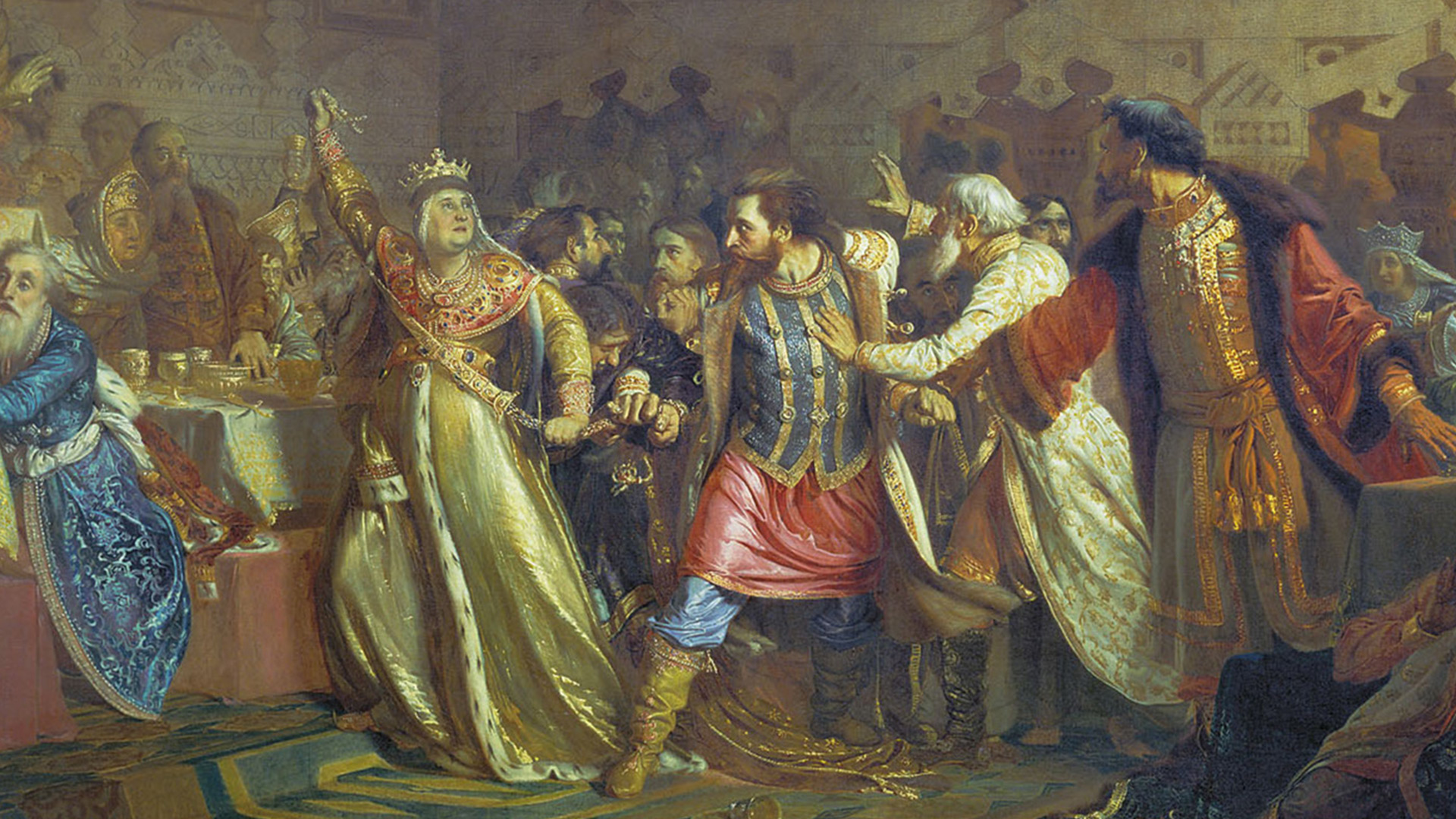
How did single women survive in rural Tsarist Russia?
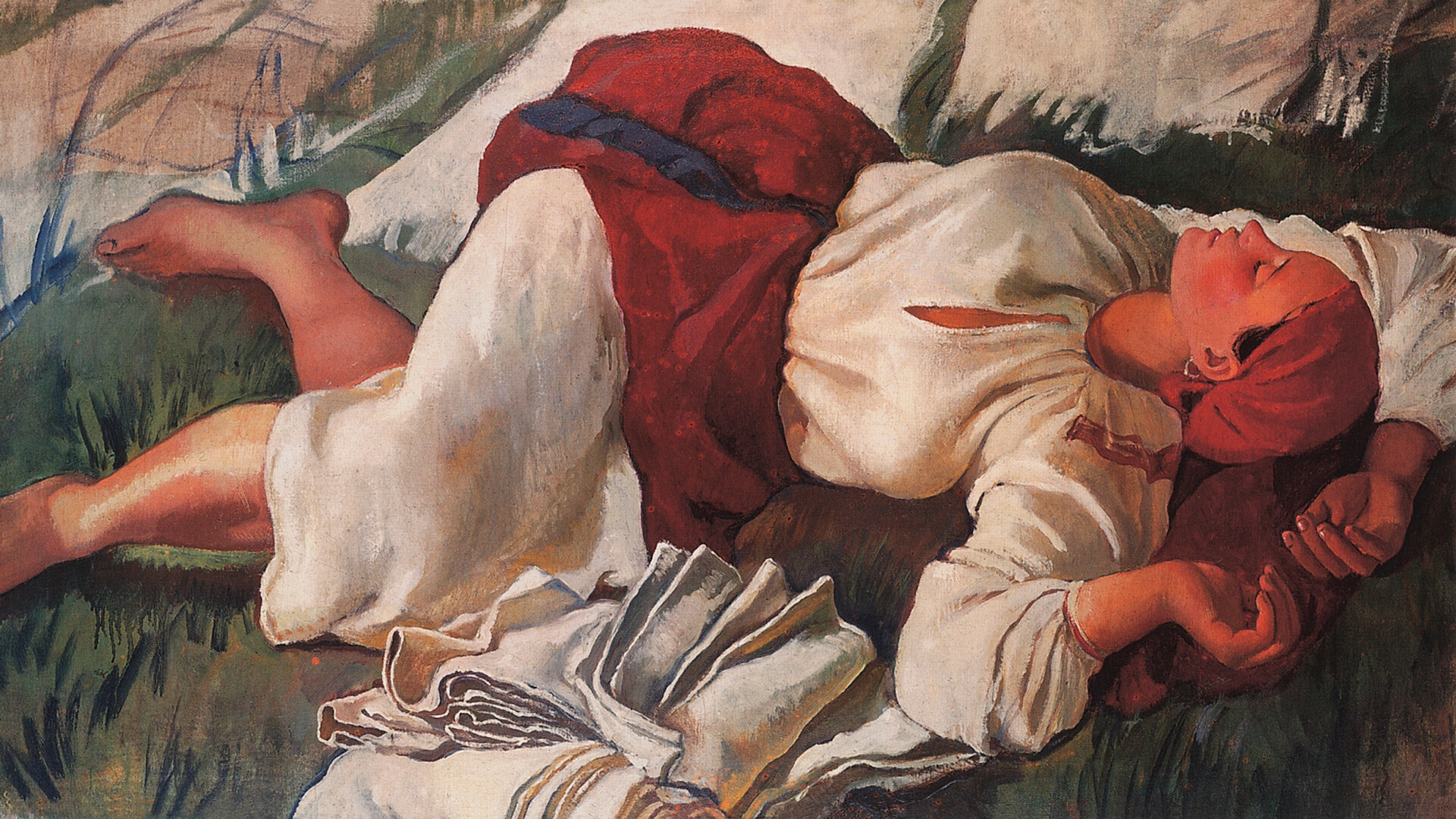
Not to wear one shoe or one earring, not to violate the pairing of objects, in general. Russian superstitions said that a woman who did not follow these rules could remain single (if she was still a girl) and, if she was married, she would become a widow.
Loneliness of a woman in the countryside was one of the most difficult plights, because a peasant household required at least two people to survive a calendar year. But, of course, there were still many single women. How did they live in the Russian countryside of the classical period – from about the sixteenth to the late nineteenth century?
How did widows live in Russia?
 "Portrait of Anna Ivanovna Sychkova, the artist's mother," 1898, Fedor Sychkov.
"Portrait of Anna Ivanovna Sychkova, the artist's mother," 1898, Fedor Sychkov.
To be widowed was, as they used to say in the village, “to die a living death”. Adulthood in the world of Russian peasants came for men and women only with marriage. An adult woman who lost her husband due to war, pestilence or an accident, immediately assumed a different status – legally, economically, socially and ritually.
After her husband’s death, a widow had to mourn him longer than all her relatives, up to a year. During that time, she had to wear a special mourning dress, white and embroidered with a red stripe along the edges. At that time, a woman had several changes of mourning attire – for the house, for going to the village, for church.
Where did the widow live? If she lived with her husband for less than a year and they had no children or there were only girls, the woman returned to her parents’ house. A widow and her boys stayed with the father-in-law’s family, where she was typically not generally respected. But, no one kept her there for good and there were cases where widows left, leaving their children in the care of their late husband’s family.
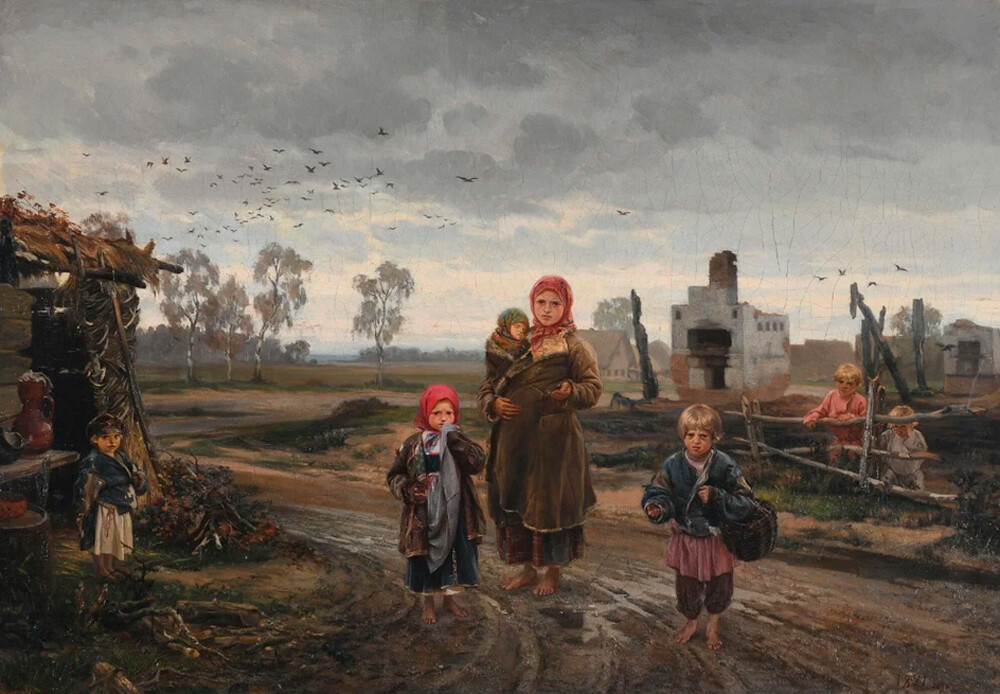 "Pogoreltsy" ("House burned down"), 1871, by Ivan Pryanishnikov
"Pogoreltsy" ("House burned down"), 1871, by Ivan Pryanishnikov
Women over 40 years of age who were widowed with no children settled separately. They, like all widows in general, were helped with money by the rural community. It was believed that “widowhood is an orphan’s life”, so it was customary to help widows, as well as orphans, and not only with money. Friends and neighbors would help widows, especially ones who were alone or had few or no children, to cut firewood and sticks for the winter, to fetch water, to harvest and thresh grain. But it was a terrible sin to offend, oppress widows, especially those with children. Abusers of widows were severely punished and often ousted from the community.
A widow, according to Russian law, was entitled to a part of the property that she and her husband acquired together. Which part it was, depended on the number of years lived together. An elderly widow would receive the property of her husband and a hut (or even a homestead, if the family was wealthy). By her husband’s will or by custom, if the husband had no brothers, the widow also often inherited real estate and commercial enterprises (which could also be owned by peasants) and further governed these businesses in her own name. This is why there were so many widowed businesswomen in pre-revolutionary Russia.
A widow who lived with her children and ran her own household was called a ‘bolshukha’ (‘The Big One’, ‘The Main One’) and had a respected status. She would attend the village meeting as the owner of the yard, had the right to vote during village meetings and could invite a single man to her home and take him as her husband, even if he was not a widower, which was not considered shameful at all. She could also live separately, receiving maintenance from her sons. In the village, hard work was very much appreciated and it was understood that any household had to be managed, which meant that there had to be strong families.
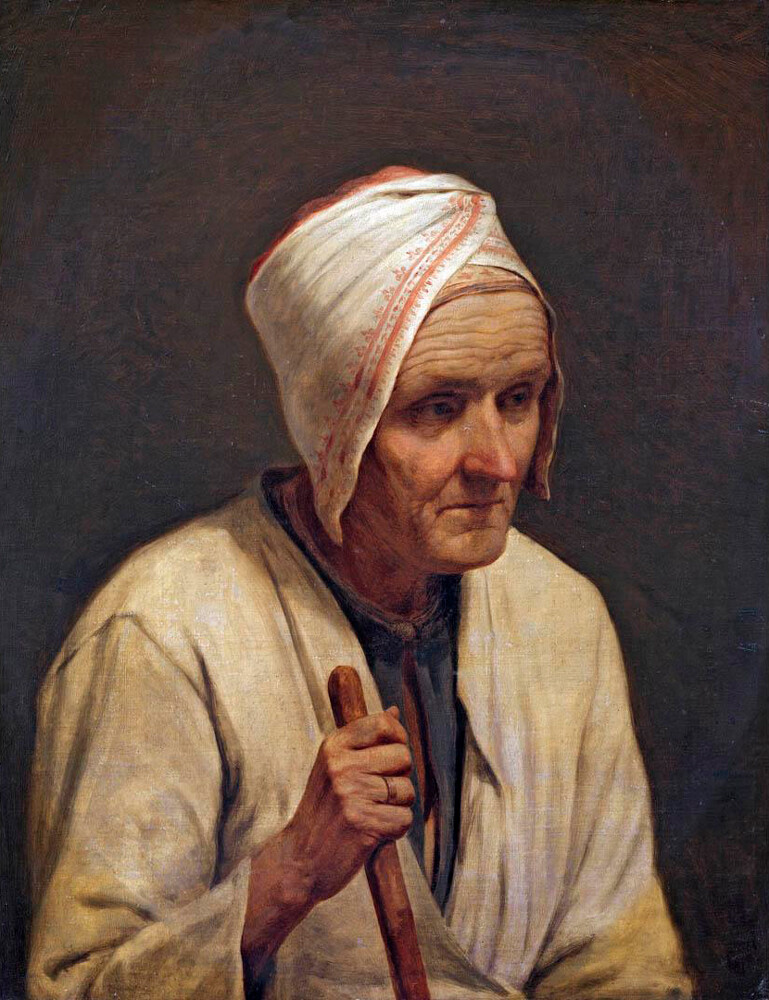 "Old peasant woman with a walking stick," the 1830s by Alexey Venetsianov
"Old peasant woman with a walking stick," the 1830s by Alexey Venetsianov
But, after a year of widowhood, a widow, especially a young and childless one, could remarry. They began to think about it literally immediately after the death of her husband – for example, there was an omen not to button the collar on the shirt of the deceased nor to tie his belt – in order to enter the next marriage as soon as possible. Widows could marry at the age of 40 or even 50. However, if a woman married for a second time, there was no “hen party” and the bride went to the wedding party with her face unveiled. There were no dowries in such marriages, as well as no wedding parade and no large celebrations – only close relatives gathered.
Old maids
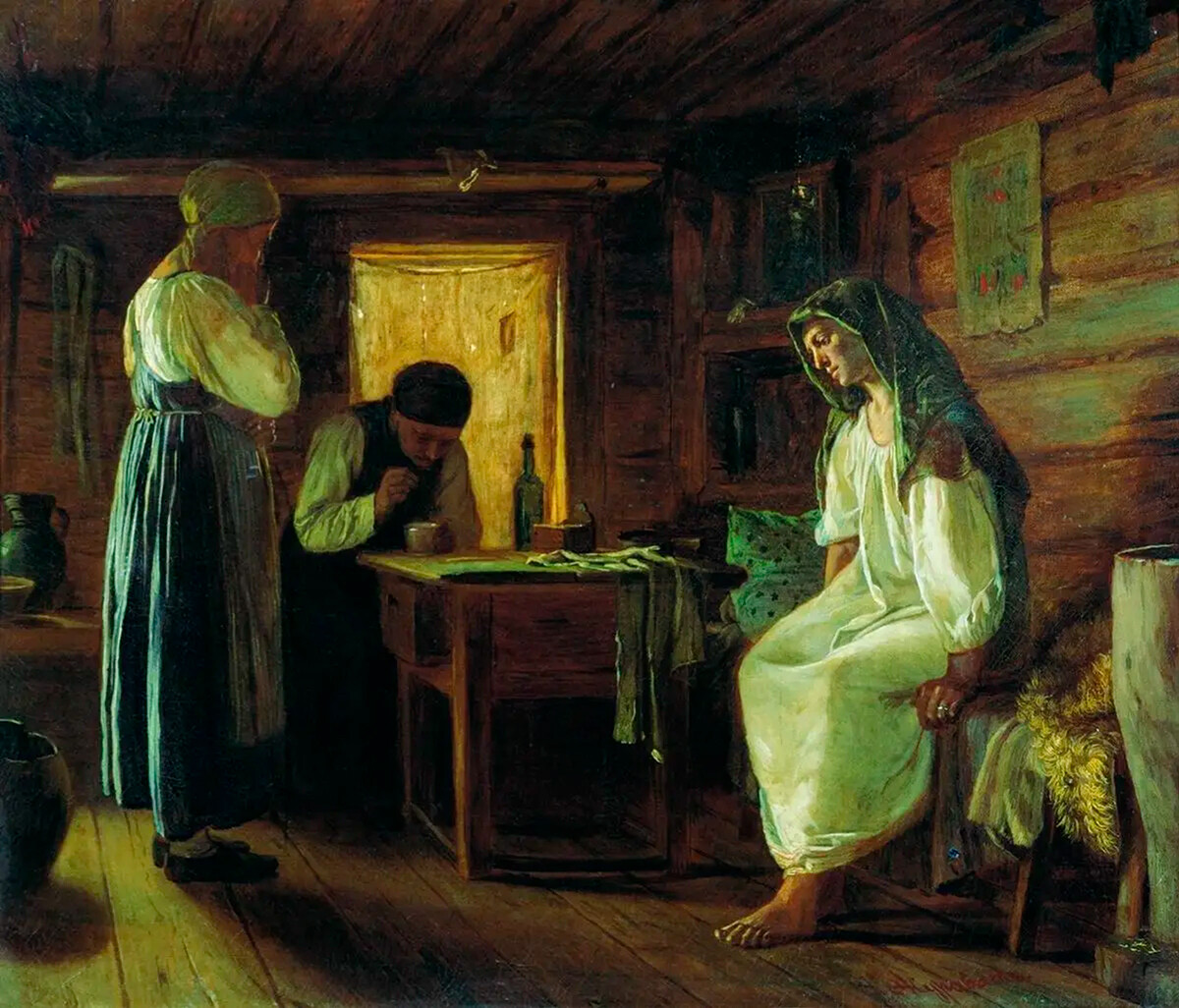 "Village witch doctor," by Firs Zhuravlev
"Village witch doctor," by Firs Zhuravlev
Of course, there were girls whose family life did not work out. For example, parents considered it unbecoming to marry off their youngest daughter before the eldest and, while the eldest was looking for a groom and going to parties and gatherings, the youngest wasn’t allowed to and, so, remained “in maidenhood”. Of course, there were also girls who simply could not find a couple they liked. Peasant society treated them so harshly that it is unpleasantly surprising today.
Those who had been kept as girls were called a variety of insulting nicknames: vekovukha (‘century-old one’), odnokosok (‘one-braided girl’, because unmarried girls wore a single braid even in adulthood), ‘gray-haired’, perespelok (‘the overly ripe one’). Such a girl could even be taken around the village by her parents on a sledge, shouting: “Nadolba, nadolba! (A word meaning roughly “thick as a brick”) Who wants a nadolba?” If a family agreed, they could already “strike a deal” and get married the very next day.
To remain a vekovukha was considered in the village a great disgrace – it was believed that such a woman had not realized her fertility potential. Even lameness, lop-sidedness or being hunchbacked were not considered an obstacle to marriage.
If a girl failed to marry and she became over 25 years old, youths would stop inviting her to their gatherings and she would be forbidden to wear girls’ dresses. Now, her clothes had to be of dark colors, like those of widows and old women. The vekovukhas usually lived separately from their families in a special building, where they kept her own household.
Widows and vekovukhas, despite their somewhat disadvantaged position, were regarded in the village as bearers of bodily and spiritual purity. As such, they fulfilled many important ceremonial functions – primarily related to the transition to the other world. As symbols of emptiness and non-parity, widows and centenarians did not attend weddings, births, christenings – but they participated in the rites and washing of the dead, watched over the body until the funeral, in general maintained and kept the funeral traditions.
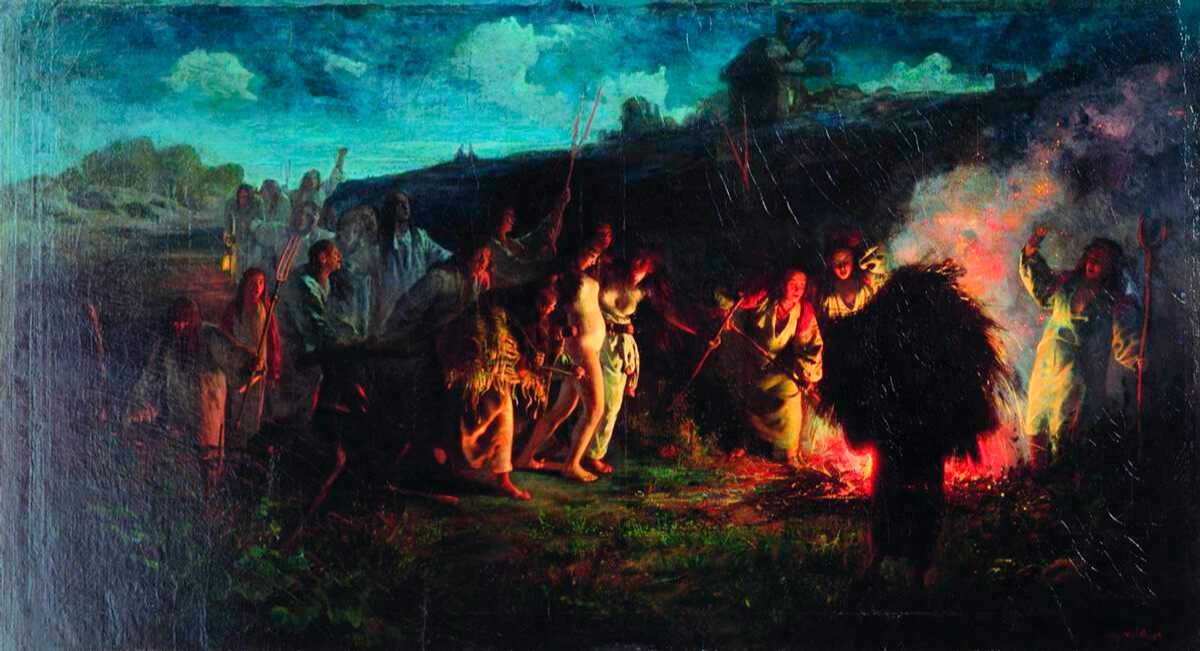 "The rite of 'plowing'," by Grigoriy Myasoedov, 1876
"The rite of 'plowing'," by Grigoriy Myasoedov, 1876
Another important “work” was the “plowing” of the arable land by vekovukhas and widows, which was widespread in many provinces, with pregnant women (who symbolized fertility) harnessed to the plow. This important ritual was to be performed only symbolically by “barren” women in the darkness of night, so that, on the contrary, the land would be fertile when day came.
Many vekovukhas and widows, after spending many years in this status, began practicing folk medicine and witchcraft in their old age. But, there were also women in the Russian countryside, who decided that they would live alone right from their younger years.
Nuns
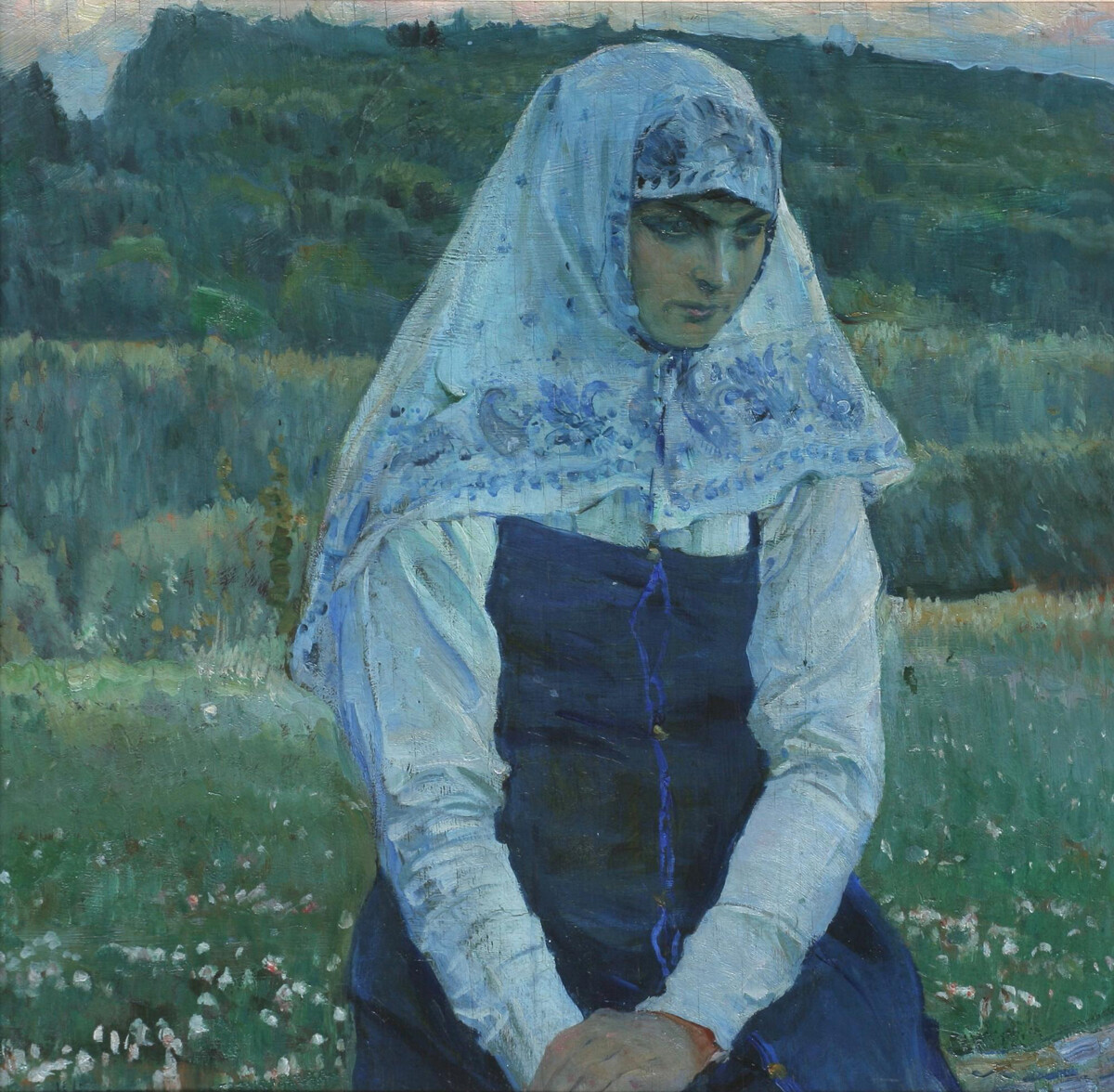 "The Christ's bride," by Mikhail Nesterov, 1913
"The Christ's bride," by Mikhail Nesterov, 1913
The girls who did not follow the family path of life, but chose the path of servitude to God, were called chernichkas. The word chernichka is a feminitive version of the word chernets (‘the one in black robes’) – a monk who belonged to the “black” (celibate) clergy. In order to become a chernichka, a girl had to declare her wish right after reaching the age of marriage – this is when the girl would begin to be invited to gatherings and parties by the village youth. This could happen because of the girl’s particular personal piety – or because of a vow made by her parents.
Upon declaring her desire, the girl had to give away all her colorful maidenly outfits and wear dark clothes, like a vekovukha or a widow. The braid was also symbolically cut while uttering the words: “As my hair will not come back together, I will not return to my maidenhood.”
Her family would often set up a separate room in the yard (it was called a “cell,” as monks’ cells) where she would live, upkeep her household and only eat Lenten food. The main functions of the chernichka in the village were funeral rites. Such girls were invited to read the Psalter over the dead, to dress and wash the bodies. Unlike, for example, vekovukhas, chernichkas were treated with special respect and reverence – because such a woman had brought her fertility and vital functions as a sacrifice to the Lord and turned her life into a service.
Chernichkas earned their living by the simple bounties paid to them by the relatives of the dead. They also gave the girls food, clothes and other things. But, most importantly, these village “nuns” helped priests and deacons at church. They knew the order of services and texts of prayers well. They could also teach village children to read and write. When they reached a mature age, the chernichkas could become full-fledged nuns. In ancient Russia, it was believed that only women without sin, who had devoted themselves to the Lord from an early age, could be true nuns.







